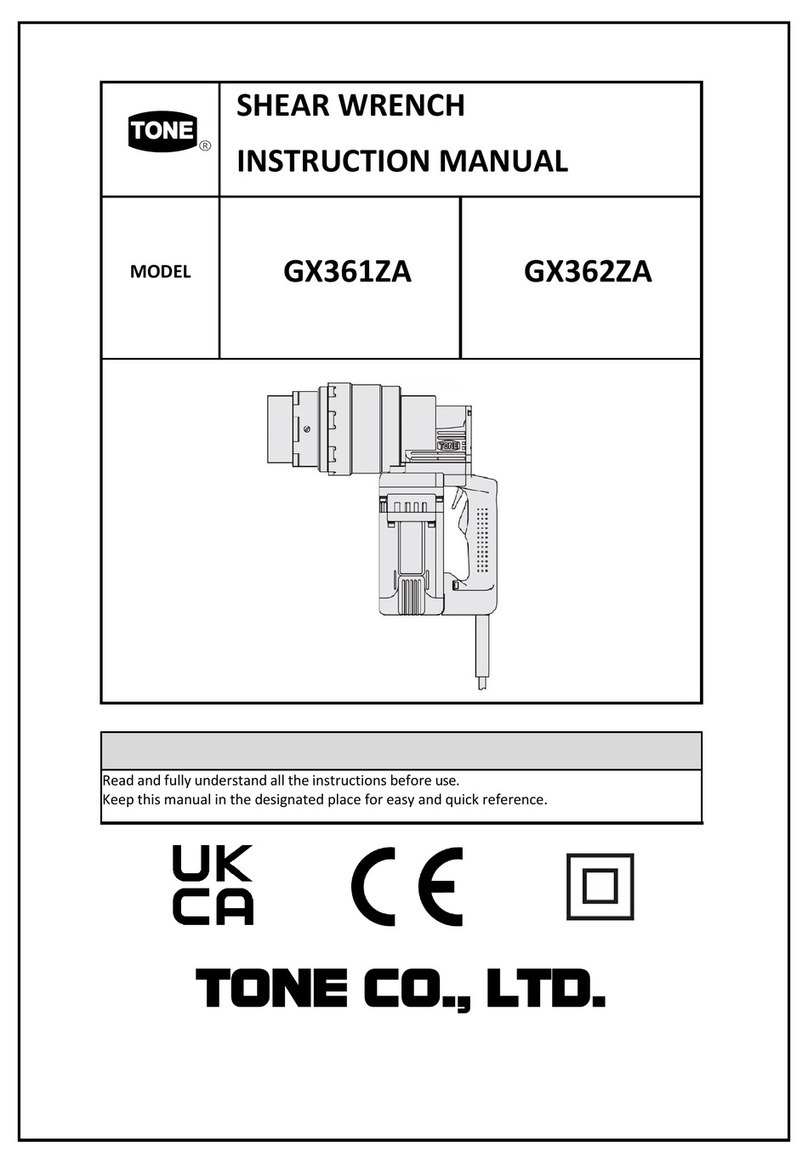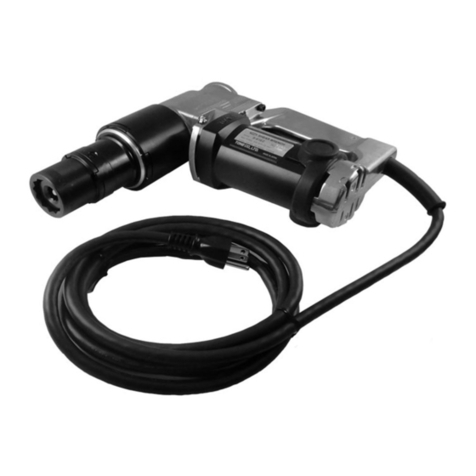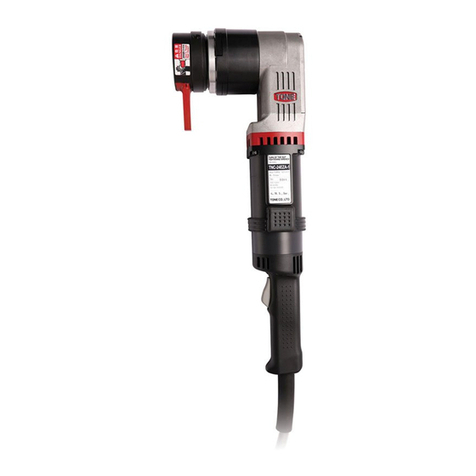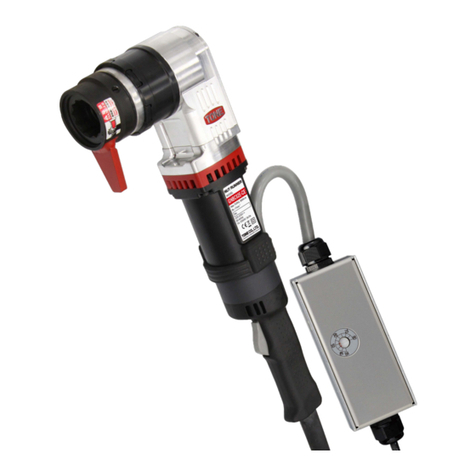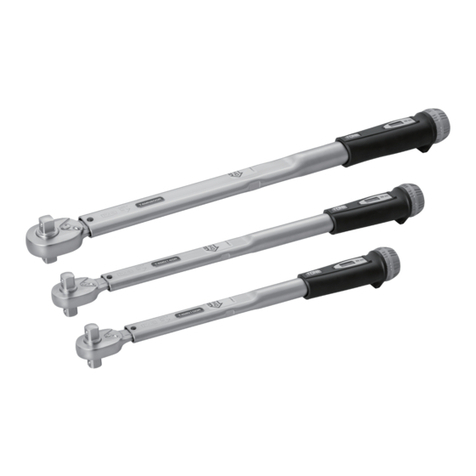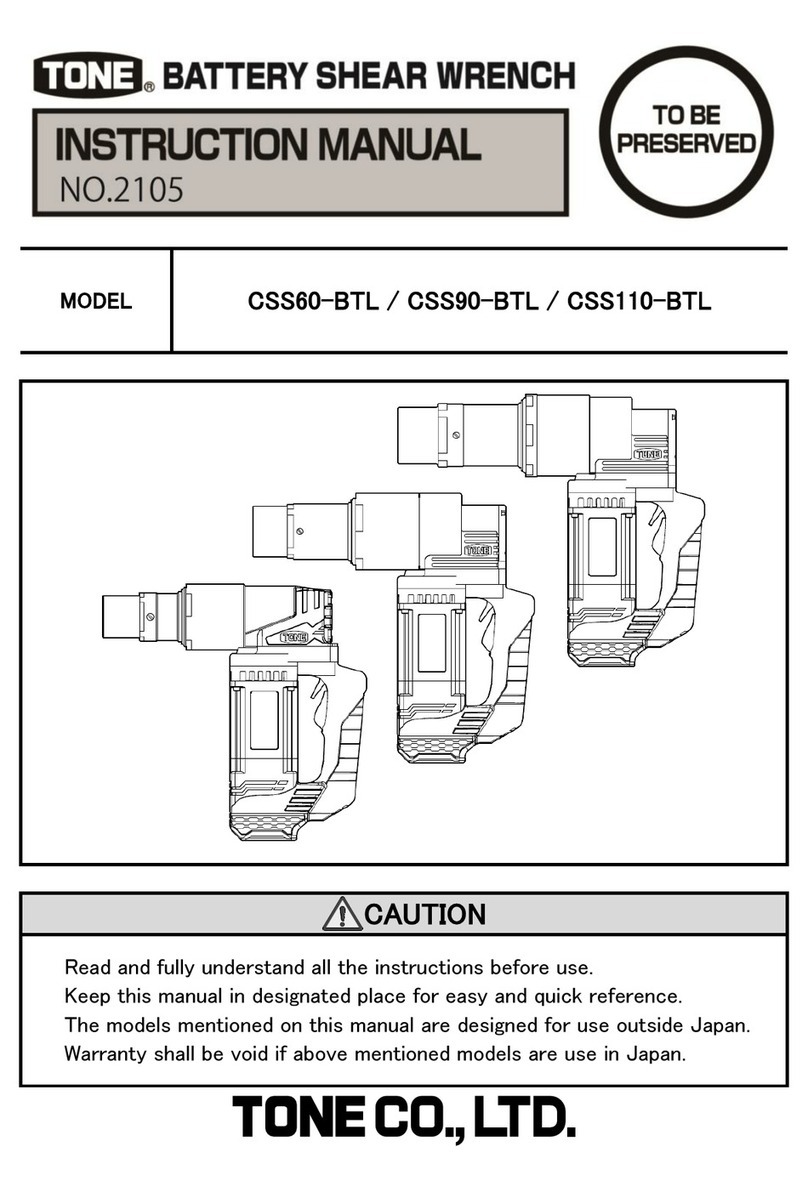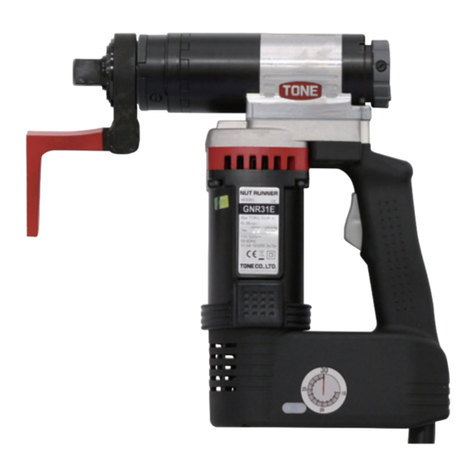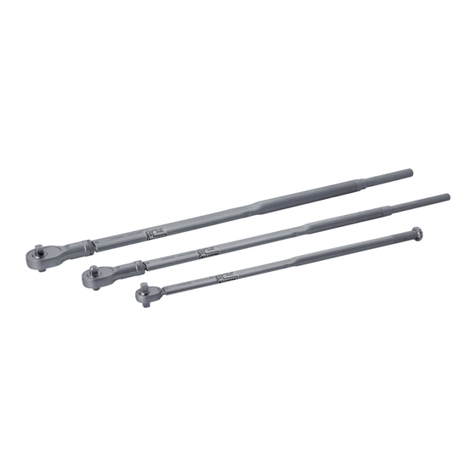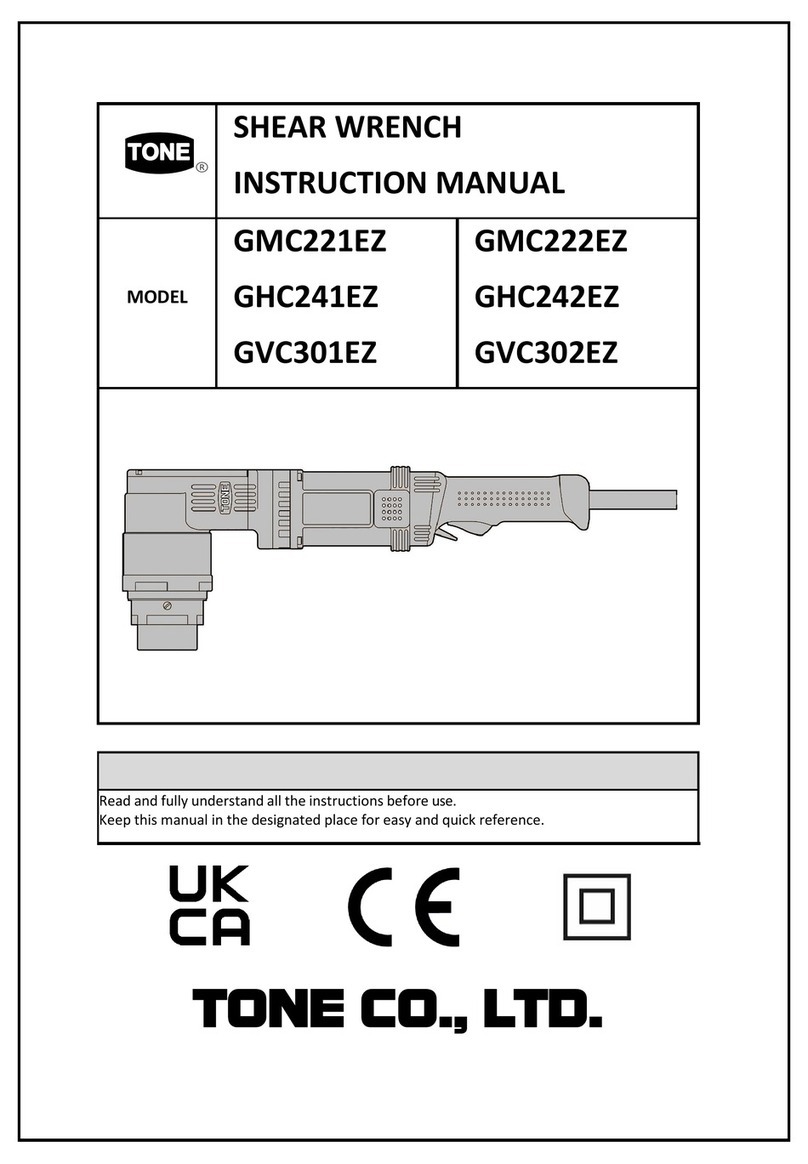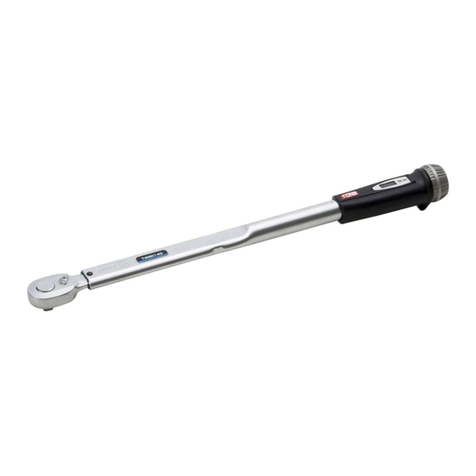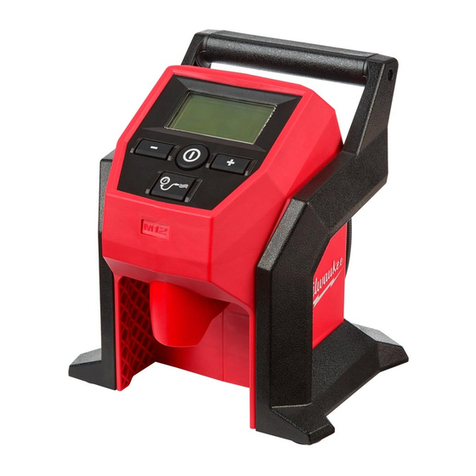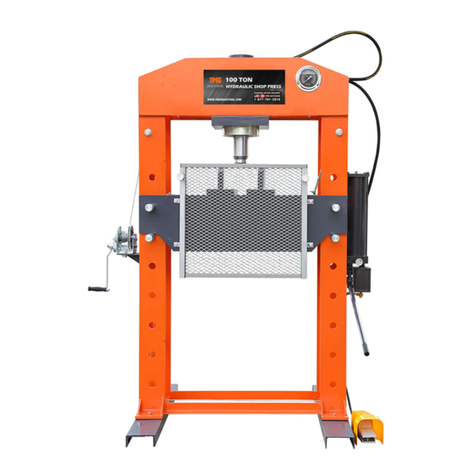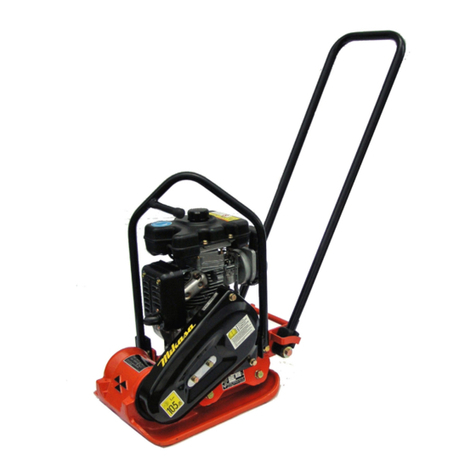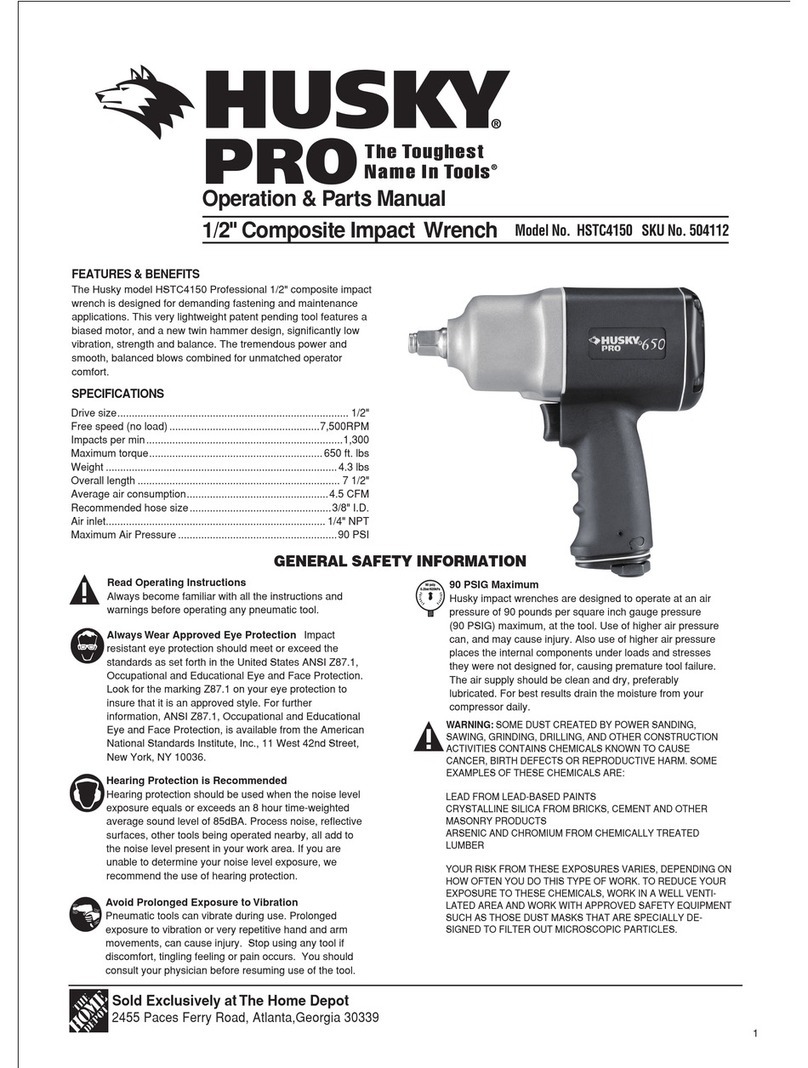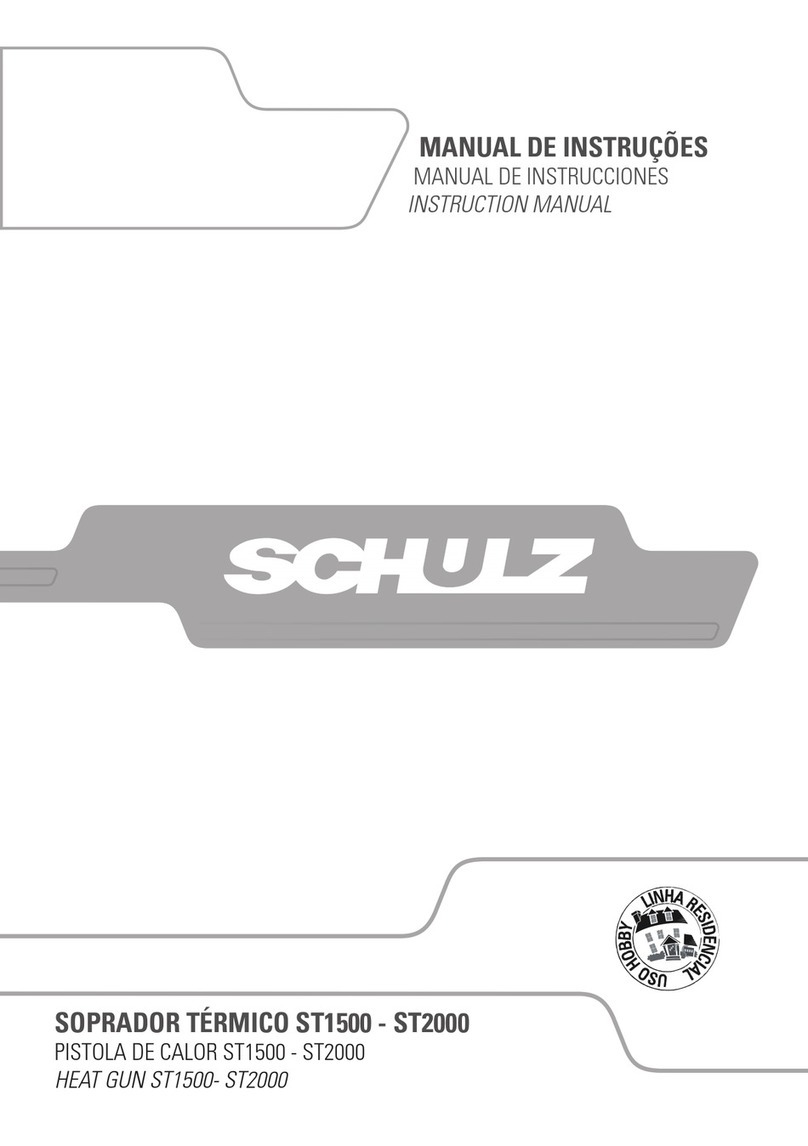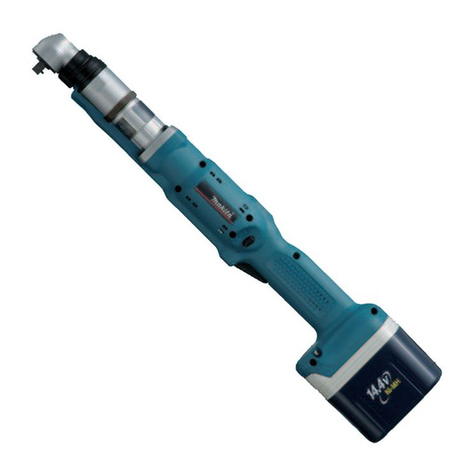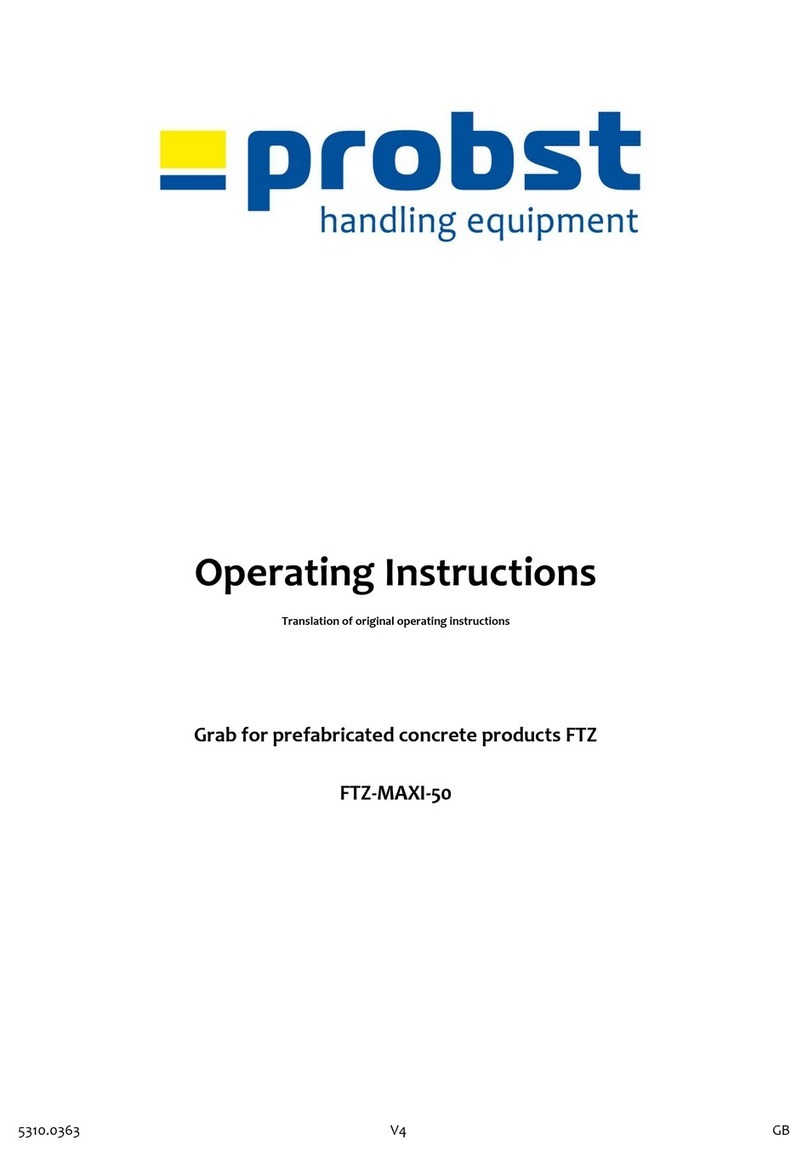Tone GM161EZ User manual

SHEAR WRENCH
INSTRUCTION MANUAL
MODEL
GM161EZ
GM221EZ
GH241EZ
GV301EZ
GM162EZ
GM222EZ
GH242EZ
GV302EZ
Read and fully understand all the instructions before use.
Keep this manual in the designated place for easy and quick reference
.
TONE CO., LTD.

Contents
Contents.................................................................................................................................................. 1
GENERAL SAFETY INSTRUCTIONS............................................................................................................2
Work area safety................................................................................................................................. 2
Electrical safety ...................................................................................................................................2
Personal safety.................................................................................................................................... 2
Power tool use and care .....................................................................................................................2
Service................................................................................................................................................. 3
INTENDED USE ........................................................................................................................................3
SHEAR WRENCH SAFETY WARNINGS......................................................................................................3
PART NAMES AND ACCESSORIES ............................................................................................................ 4
................................................................................................................................................................ 4
Accessories.......................................................................................................................................... 4
BEFORE USE.............................................................................................................................................5
REMOVAL/INSTALLATION OF SOCKETS ..................................................................................................5
INSPECTION AND MAINTENANCE...........................................................................................................6
SPECIFICATIONS AND DIMENSIONS........................................................................................................ 7
EU DECLARATION OF CONFORMITY .......................................................................................................8
UK DECLARATION OF CONFORMANCE ...................................................................................................9

GENERAL SAFETY INSTRUCTIONS
When using electric tools, basic safety precautions, including the following, should always be
followed to reduce the risk of fire, electric shock, and personal injury. Read and keep all these
instructions before operating this wrench.
Work area safety
1. Keep the work area clean and well-lit. Cluttered and dark areas invite accidents.
2. Do not operate power tools in explosive atmospheres, such as in
3. the presence of flammable liquids, gases, or dust. Power tools create sparks that may ignite
dust, or fumes.
4. Keep children and bystanders away while operating a power tool. Distractions can cause you to
lose control.
Electrical safety
1. Power tool plugs must match the outlet. Never modify the plug in any way. Do not use any
adapter plugs with earthed (grounded) power tools. Unmodified plugs and matching outlets will
reduce the risk of electric shock.
2. Avoid body contact with earthed or grounded surfaces such as pipes, radiators, ranges, and
refrigerators. There is an increased risk of electric shock if your body is earthed or grounded.
3. Do not expose power tools to rain or wet conditions. Water entering a power tool will increase
the risk of electric shock.
Personal safety
1. Stay alert, watch what you are doing, and use common sense when operating a power tool. Do
not use a power tool while you are tired.
2. or under the influence of drugs, alcohol, or medication. A moment of inattention while operating
power tools may result in serious personal injury.
3. Use personal protective equipment. Always wear eye protection. Protective equipment such as
non-skid safety shoes, hard hats, or hearing protection used for appropriate conditions will
reduce personal injuries.
4. Avoid accidental starting. Ensure the switch is in the off position before installing the storage
battery. Carrying power tools with your finger on the switch invites accidents.
5. Remove the slot screwdriver before turning the power tool on. Anything left attached to a
rotating part of the power tool may result in personal injury.
6. Do not overreach. Keep proper footing and balance at all times.
7. This enables better control of the power tool in unexpected situations.
8. Dress properly. Do not wear loose clothing or jewelry. Keep your hair, clothing, and gloves away
from moving parts. Loose clothes, jewelry, or long hair can be caught in moving parts.
9. Do not let familiarity gained from frequent use of tools allow you to become complacent and
ignore tool safety principles. A careless action can cause severe injury within a fraction of a
second.
Power tool use and care
1. Do not force the power tool. Use the correct power tool for your application. The correct power
tool will do the job better and safer at the rate at which it was designed.
2. Do not use the power tool if the switch does not turn on and off. Any power tool that cannot be
controlled with the switch is dangerous and must be repaired.

3. Disconnect the battery pack or plug from the power source before making any adjustments,
changing accessories, or storing power tools. Such preventive safety measures reduce the risk of
starting the power tool accidentally.
4. When not in use, store power tools out of the reach of children and do not allow people
unfamiliar with the power tool or these instructions to operate the power tool. Power tools are
dangerous in the hands of untrained users.
5. Maintain power tools. Check for misalignment or binding of moving parts, breakage of parts, and
any other condition that may affect the power tools operation. If damaged, have the power tool
repaired before use. Many accidents are caused by poorly maintained power tools.
6. Use the power tool, sockets, and accessories in accordance with these instructions and in the
manner intended, taking into account the working conditions and the work to be performed.
Use of the power tool for operations different from intended could result in a hazardous
situation.
Service
1. Have your power tool serviced by a qualified repair person using only identical replacement
parts. This will ensure that the safety of the power tool is maintained.
2. Never service damaged battery packs . Service of battery packs should only be performed by
the manufacturer or authorised service providers.
INTENDED USE
The TONE shear wrench (corded or cordless) is an electric tool for tightening Tension Control Bolt
bolting assemblies.
SHEAR WRENCH SAFETY WARNINGS
1. Beware of electric shocks. Never use a shear wrench in wet weather conditions.
2. Ensure sockets are fitted correctly with all the appropriate accessories (see page ??).
3. Avoid accidental starting when carrying a shear wrench.
4. Do not disassemble shear wrenches. Disassembly or modification by unauthorized personnel may
result in a malfunction or injury.
5. Disassembly does not include sockets, inner socket spring, ejector pin, ejector pin spring or battery
pack.
6. Stop using the shear wrench if unusual sound, vibration or smell is detected.
7. Each day before using a shear wrench, check for any damage or cracks, check the condition of power
cable or battery pack.
8. Check the shear wrench for damage if it is dropped. Stop using the shear wrench if unusual sound,
vibration or smell is detected.
9. Keep shear wrench in a clean condition.

PART NAMES AND ACCESSORIES
Accessories
MODEL
WORKING PARTS AND ACCESSORIES
GM161EZ/GM162EZ
GM221EZ/GM222EZ
GH241EZ/GH242EZ
GV301EZ/GV302EZ
Inner Socket
Outer Socket
Inner Socket Spring
Ejector Pin
Ejector Spring
Screwdriver (-)
Metal Case
Instruction Manual
●
Contact your distributor for long sockets or accessories.

BEFORE USE
1. Check for any deformation, crack or damage on the shear wrench body, socket, storage battery,
charger, parts, etc.
2. Do not use the wrench if any problem is found.
3. Please check the power supply. Only use the power supply indicated on the motor rating plate.
4. Select the correct sockets according to the size of the bolt assembly to be tightened.
5. Ensure that the socket assembly is correctly installed on the wrench. Ensure that set screws are
securely fastened as any loosely installed sockets may result in accidents and personal injury.
6. See “Removal/Installation of Sockets” below.
REMOVAL/INSTALLATION OF SOCKETS
Remove inner & outer socket assembly from
wrench by unscrewing set screws (as below).
Do not remove set screws completely from
outer socket holder.
To separate the inner socket from outer socket,
push the projecting pin using a screwdriver or TC
bolt.
The two sockets part allowing them to be
cleaned and/or replaced.
To re-join the inner and outer sockets, place the
inner socket vertically onto a flat surface then
slide the outer socket over the inner socket.
They may not fully fit together so push the
projecting pin on the inner socket down using a
screwdriver or a complete TC bolt. The outer
socket will be appropriately assembled.
Set inner & outer socket assembly to the wrench
body and completely remove the gap between
socket assembly and wrench body. The gap can
be removed by turning & pushing down
screwdriver or TC bolt into the inner socket.
* Fasten the set screws only after gap is
completely removed.

INSPECTION AND MAINTENANCE
1. Remove the power plug from the mains power supply before inspection and maintenance.
2. Replace the inner socket when sheared bolt spline falls out of the inner socket without pulling
the ejector lever.
3. There is a risk of unexpected bolt spline ejection when inner drive of the inner socket is worn down.
The inner socket should be replaced.
4. Clean dust and dirt from the sockets periodically.
5. Use only a dry cloth to clean your wrench and sockets since organic solvents such as benzene,
thinner and gasoline may cause cracks or discoloration to parts.
6. Do not allow oil and organic solvents to enter the motor.
7. Store wrench in the original metal case and keep it dry.
8. Ejector pin must be regularly inspected and replaced when it wears down. A sheared bolt spline
will not be ejected from inner socket with worn ejector pin.
9. Maintain the wrench in a state of cleanliness as with any other electrical tool.
10. Do not pick up or carry the shear wrench by the electric cable.
11. Change motors carbon brushes when necessary. The length of the brush needs to be more than
6mm. If shorter than this an insulation pin protrudes through the carbon, disabling further
motor operations to protect the armature.
12. To maintain the shear wrench in good condition and service, return to TCB® Ltd every 6 months
or 30,000 bolt installations whichever is first.

SPECIFICATIONS AND DIMENSIONS
Model GM161EZ GM162EZ GM221EZ GM222EZ GH241EZ GH242EZ GV301EZ GV302EZ
Voltage 115V 230V 115V 230V 115V 230V 115V 230V
Max
Current
10A 5A 11A 5.5A 11A 5.5A 11A 5.5A
Input
Power
1100W 1200W 1200W 1200W
Frequency 50 – 60 Hz
Speed 29 rpm 14 rpm 10 rpm 5 rpm
Bolt Ø M12, M16 M16, M20, M22 M22, M24 M27, M30
Weight 3.7 Kg 4.8 Kg 6.2 Kg 6.7 Kg
L 222 244 263 272
L1 77 99 119 128
L2 19 24 24 26
D 58 75 85 98
D1 53 57 68 93
D2 39 49 56 75
H 251 259 274 271
(Dimensional unit: mm)

EU DECLARATION OF CONFORMITY
We hereby declare that the following products conform to the essential health and safety
requirements of EU Directives.
Product
ELECTRIC SHEAR WRENCH
Model No.
GM161EZ/GM162EZ
GM221EZ/GM222EZ
GH241EZ/GH242EZ
GV301EZ/GV302EZ

UK DECLARATION OF CONFORMANCE
We hereby declare that the following products conform to the essential health and safety
requirements of UK Regulations.
Product
ELECTRIC SHEAR WRENCH
Model No.
GM161EZ/GM162EZ
GM221EZ/GM222EZ
GH241EZ/GH242EZ
GV301EZ/GV302EZ

NOTES:

This manual suits for next models
7
Table of contents
Other Tone Power Tools manuals
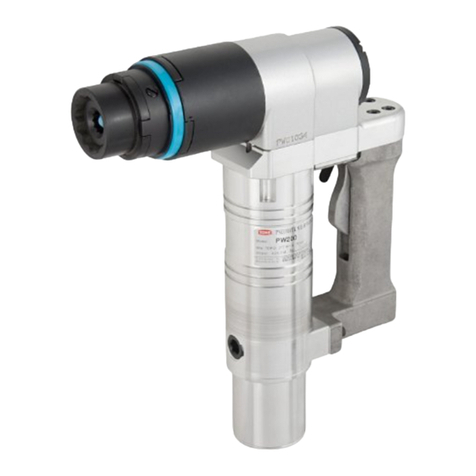
Tone
Tone PW200 User manual
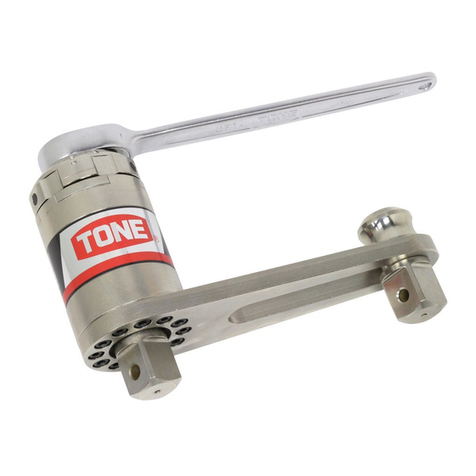
Tone
Tone P150A User manual
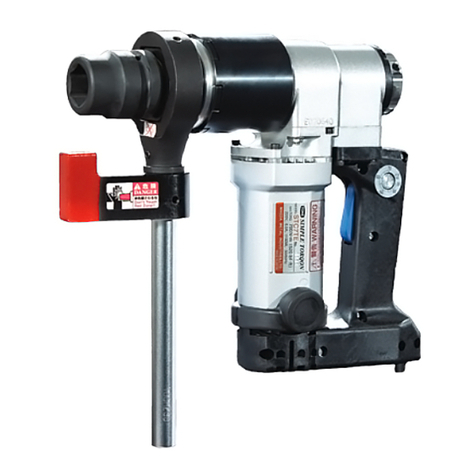
Tone
Tone SIMPLE TORQON XT-STC7TE User manual
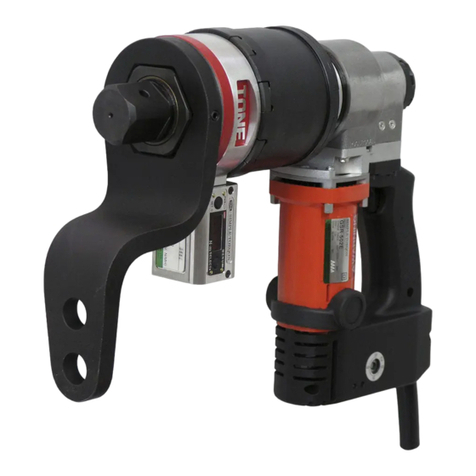
Tone
Tone Power Digitorqon PDX-302N User manual
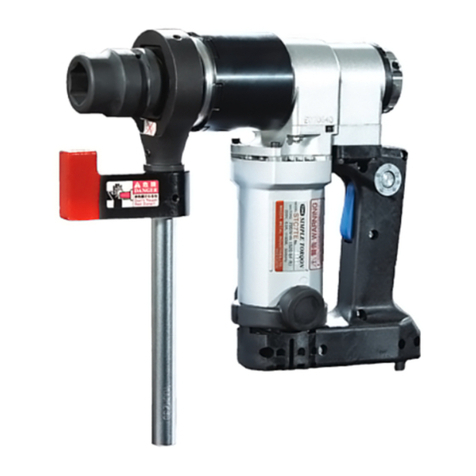
Tone
Tone GNB31E-CE User manual
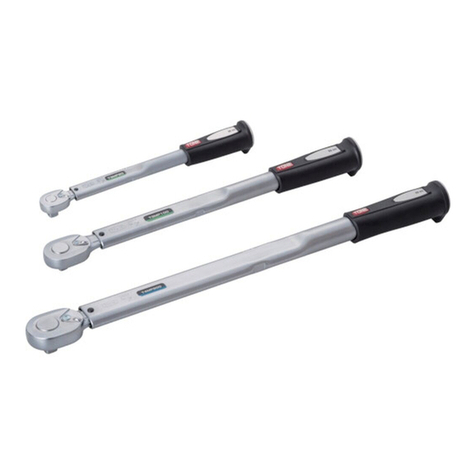
Tone
Tone T2MP6 User manual
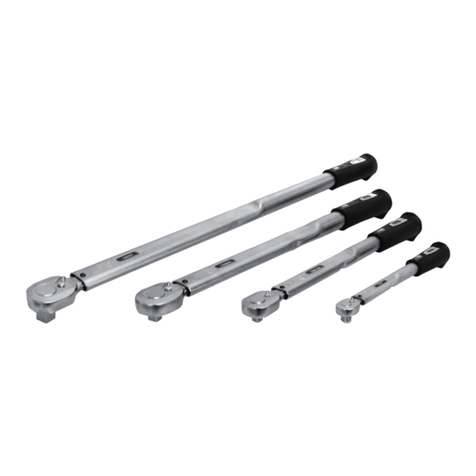
Tone
Tone T2M6 User manual

Tone
Tone GPTN241E-UC User manual
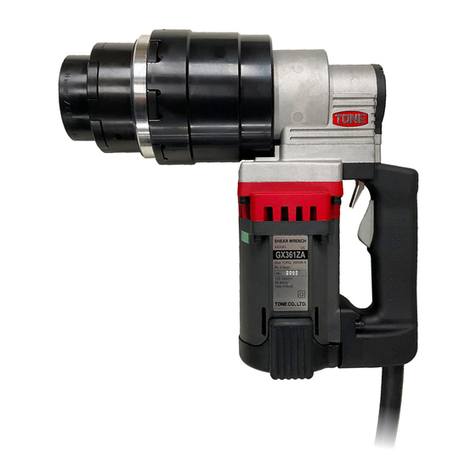
Tone
Tone GX361ZA-UC User manual
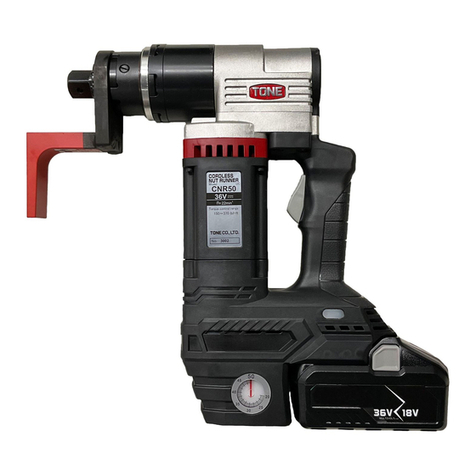
Tone
Tone CNR Series User manual
Popular Power Tools manuals by other brands
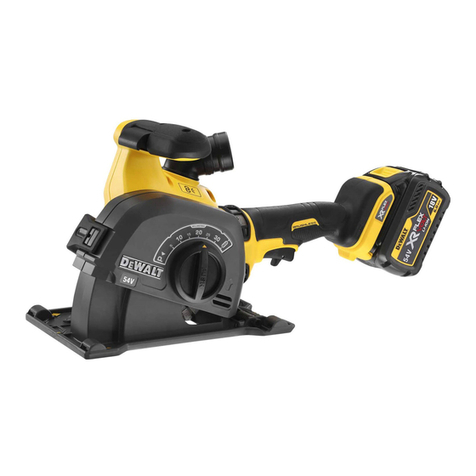
DeWalt
DeWalt XR Li-Ion Flexvolt DCG200 Original instructions

Hyundai power products
Hyundai power products HNHPACK18V Original instructions

Siemens
Siemens FCV-500 instructions
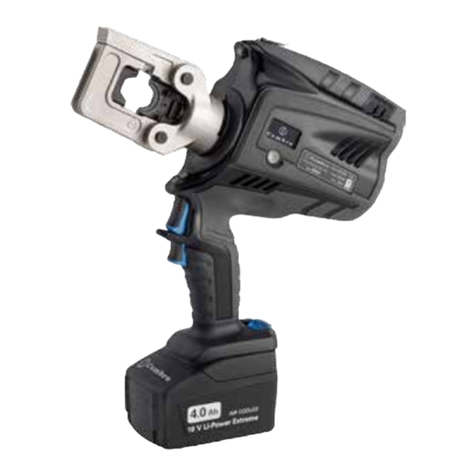
Cembre
Cembre B500 Operation and maintenance manual
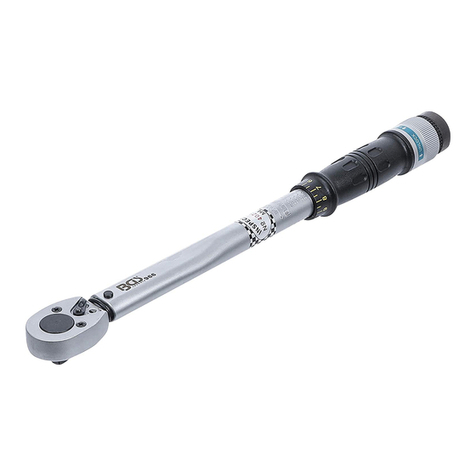
BGS technic
BGS technic 965 966 quick start guide
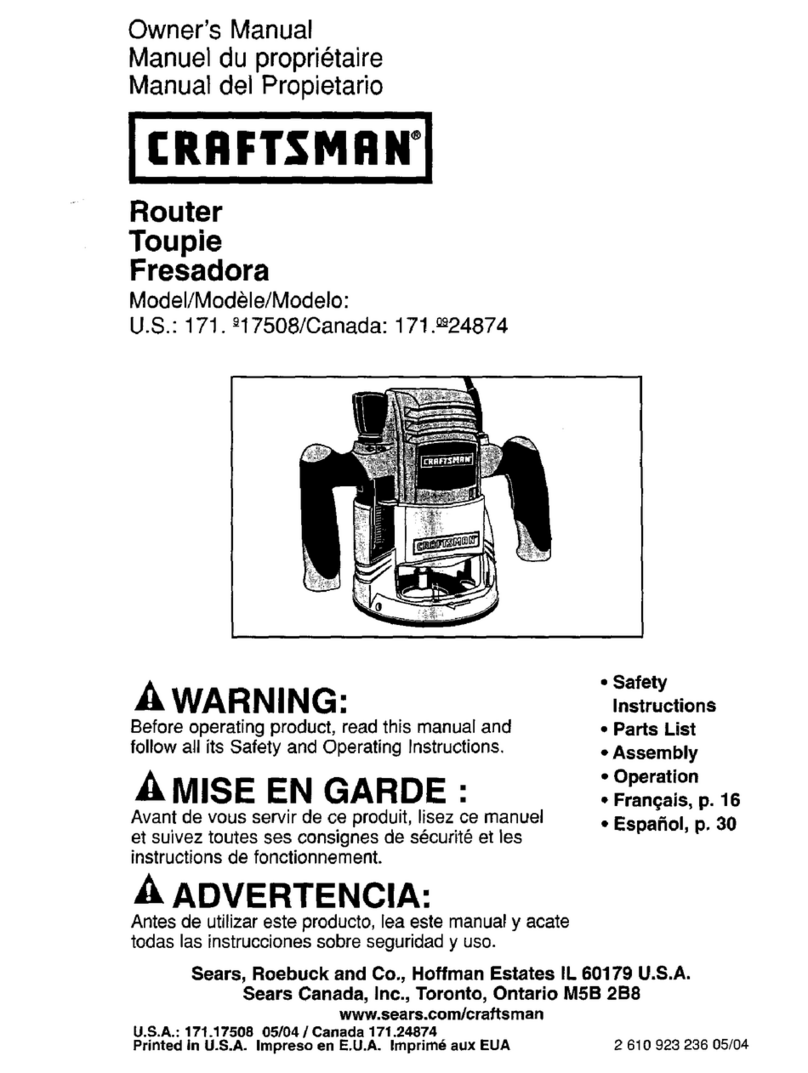
Craftsman
Craftsman 171.917508 owner's manual
